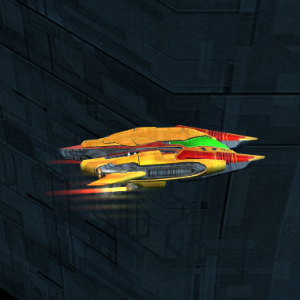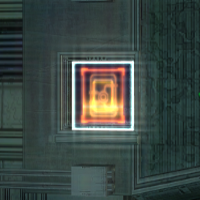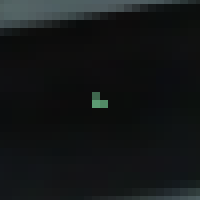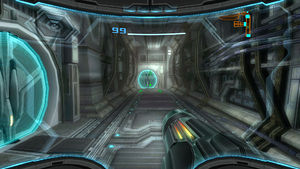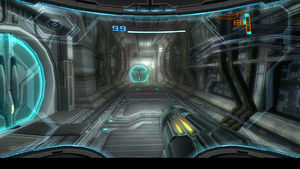|
|
Progress Continues
We've already had 21393 updates since Dolphin 5.0. Keep up with Dolphin's continuing progress through the Dolphin Blog: August, September, and October 2023 Progress Report. |
|
|
The Dolphin Emulator Wiki needs your help! Dolphin can play thousands of games, and changes are happening all the time. Help us keep up! Join in and help us make this the best resource for Dolphin. |
Metroid Prime 3: Corruption (Wii): Difference between revisions
| Line 18: | Line 18: | ||
''Metroid Prime 3'' was also included in [[Metroid Prime: Trilogy]], which includes updated versions of its prequels: [[Metroid Prime]] and [[Metroid Prime 2: Echoes]]. | ''Metroid Prime 3'' was also included in [[Metroid Prime: Trilogy]], which includes updated versions of its prequels: [[Metroid Prime]] and [[Metroid Prime 2: Echoes]]. | ||
== | == Emulation Information == | ||
=== Shader Compilation Stuttering === | === Shader Compilation Stuttering === | ||
The ''Metroid Prime'' games are some of the most susceptible titles to shader compilation stuttering, thanks to a combination of very complex effects and dynamic loading. The GC and Wii have no concept of shaders - everything runs directly "on the metal" without any APIs. Modern desktop and phone systems do not work in this way, requiring the use of shaders as an intermediary so your system's GPU can perform the tasks that the GC and Wii GPU performed. But shaders have to be created, and since GC/Wii games are not designed to create shaders ahead of time as a PC game would, when a new effect appears Dolphin has to delay the CPU thread while the GPU thread performs the compilation; a pause that does not exist on the consoles. For most games shader generation takes only a few milliseconds, but for the ''Metroid Prime'' series and a few other demanding titles, the shaders that they generate are so large that they can result in noticeable stuttering. | The ''Metroid Prime'' games are some of the most susceptible titles to shader compilation stuttering, thanks to a combination of very complex effects and dynamic loading. The GC and Wii have no concept of shaders - everything runs directly "on the metal" without any APIs. Modern desktop and phone systems do not work in this way, requiring the use of shaders as an intermediary so your system's GPU can perform the tasks that the GC and Wii GPU performed. But shaders have to be created, and since GC/Wii games are not designed to create shaders ahead of time as a PC game would, when a new effect appears Dolphin has to delay the CPU thread while the GPU thread performs the compilation; a pause that does not exist on the consoles. For most games shader generation takes only a few milliseconds, but for the ''Metroid Prime'' series and a few other demanding titles, the shaders that they generate are so large that they can result in noticeable stuttering. | ||
Eventually stuttering will reduce as a shader cache is built up, but there is no solution to this problem at this time. | Eventually stuttering will reduce as a shader cache is built up, but there is no solution to this problem at this time. | ||
== Problems == | |||
=== Constant Wii Remote Disconnects === | |||
Since {{revision|3.5-471}}, when using the MS Bluetooth Stack (the default bluetooth stack on Windows) Prime 3 will think that the Wii Remote is constantly disconnecting. Pressing a button on the Wii Remote will restore it, but it will disconnect again seconds later. Windows users can disable "Enable Speaker Data" to solve this problem, or move to either the Toshiba Stack or the DolphinBar. | |||
=== Bloom Offset === | === Bloom Offset === | ||
Revision as of 04:59, 26 November 2015
| Metroid Prime 3: Corruption | |
|---|---|
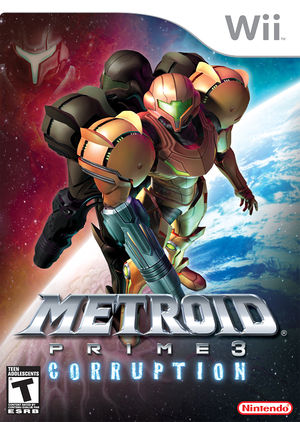 | |
| Developer(s) | Retro Studios |
| Publisher(s) | Nintendo |
| Series | Metroid, Metroid Prime |
| Platform(s) | Wii |
| Release date(s) | JP March 6, 2008 NA August 27, 2007 EU October 26, 2007 AUS November 8, 2007 |
| Genre(s) | First-person action-adventure, First-person shooter, Action-adventure |
| Mode(s) | Single-player |
| Input methods | Wii Remote + Nunchuk |
| Compatibility | 5 Perfect |
| GameIDs | |
| See also... |
Trilogy Version |
Metroid Prime 3: Corruption is a first-person action-adventure game developed by Retro Studios and published by Nintendo for the Wii video game console. It is the tenth game in the Metroid series, and the final entry in the Metroid Prime Trilogy. The Wii Remote and Nunchuk devices are featured in a new control scheme that took a year to develop and caused the game's release to be delayed several times.
Gameplay for Metroid Prime 3 is similar to its predecessors: players explore open ended worlds, finding story clues and power ups, solving puzzles, jumping on platforms, and fighting enemies. Unlike past games however, the game is divided into several open worlds; each world is smaller than the single open world environments of Metroid Prime or Metroid Prime 2, but the combined size is greater. As with Metroid Prime 2, exploring the worlds is not aimless: players explore the world freely, but there are specific tasks meant to be accomplished on each world which are told to you beforehand. The game also includes hypermode, a phazon overload system that allows players to exchange health for massive damage. The biggest change is the controls. Metroid Prime 3 uses a new control system using the Wii Remote and Nunchuk, allowing free aiming and movement similar to mouse and keyboard controls.
Metroid Prime 3 was also included in Metroid Prime: Trilogy, which includes updated versions of its prequels: Metroid Prime and Metroid Prime 2: Echoes.
Emulation Information
Shader Compilation Stuttering
The Metroid Prime games are some of the most susceptible titles to shader compilation stuttering, thanks to a combination of very complex effects and dynamic loading. The GC and Wii have no concept of shaders - everything runs directly "on the metal" without any APIs. Modern desktop and phone systems do not work in this way, requiring the use of shaders as an intermediary so your system's GPU can perform the tasks that the GC and Wii GPU performed. But shaders have to be created, and since GC/Wii games are not designed to create shaders ahead of time as a PC game would, when a new effect appears Dolphin has to delay the CPU thread while the GPU thread performs the compilation; a pause that does not exist on the consoles. For most games shader generation takes only a few milliseconds, but for the Metroid Prime series and a few other demanding titles, the shaders that they generate are so large that they can result in noticeable stuttering.
Eventually stuttering will reduce as a shader cache is built up, but there is no solution to this problem at this time.
Problems
Constant Wii Remote Disconnects
Since 3.5-471, when using the MS Bluetooth Stack (the default bluetooth stack on Windows) Prime 3 will think that the Wii Remote is constantly disconnecting. Pressing a button on the Wii Remote will restore it, but it will disconnect again seconds later. Windows users can disable "Enable Speaker Data" to solve this problem, or move to either the Toshiba Stack or the DolphinBar.
Bloom Offset
Prime 3 has noticeable bloom offset problems. It will have several copies of the bloom spread out from the source, and can be very distracting. The only solution is to disable "Scaled EFB Copy", but this has some issues of its own. See issue 5573.
Visors
The Scan visor will only work if Store EFB Copies to Texture Only is disabled. Though Store EFB Copies to Texture Only is forced off by the GameINI, visor issues may still occur if the graphics configuration window is opened during gameplay. Disable Store EFB Copies to Texture Only in the Dolphin GUI to avoid any problems.
Dot
When playing above 1x Native internal resolution, there is a dot in the center of the screen. It's small and easy to ignore, but it's always there. There is no fix for this problem.
The Black Bar
During Shader Compilation, stuttering can become so severe that it desyncs the GPU and CPU threads in Dual Core mode. The game freaks out over this desync, creating a black bar at the bottom of the screen, which takes up 15% of the screen space and "squishes" the game in the remaining space. The black bar will remain there from then on whether stuttering continues or ceases.
After 4.0-7517, enabling Virtual XFB or Real XFB will fix and/or prevent the problem. If XFB is disabled the problem may still occur. Details can be found in the September Progress Report.
Template:SSavestatesTemplate:/s
Using save states in MP3 will crash Dolphin. Use the in-game saving to avoid any problems. Seems to have been fixed in the recent builds (4.0-5615 and onward).
Template:SPixelation GlitchesTemplate:/s
A large pixelated block may appear in the upper left area of the frame. It may only appear during movement (newer revisions) or be stuck there permanently (older revisions). To avoid this problem, use the D3D graphics backend. Fixed by 4.0-5523, and detailed in the February Progress Report
Template:SRefraction SlowdownTemplate:/s
Refraction effects, such as raindrops on Samus' visor and the heat effect after firing her weapon for an extended period, cause slowdown on all backends. OpenGL is affected worse, though D3D is affected as well. It also has slowdowns when several grapple points (yellow pulsing) are present on screen at once. Even the strongest computers are affected by this issue, and there is no solution at this time. Fixed by 4.0-5124.
Template:SBlue Startup VideoTemplate:/s
Since 4.0-216, the opening video is... blue. It goes away as soon as a Wii Remote appears on the screen or after a period of time. It has no effect on gameplay. See issue 6783. Fixed by 4.0-3334.
Configuration
Only configuration options for the best compatibility where they deviate from defaults are listed.
Graphics
| Config | Setting | Notes |
|---|---|---|
| Store EFB Copies to Texture Only | Off | Needed to avoid visor issues |
Wii Remote
| Config | Setting | Notes |
|---|---|---|
| Enable Speaker Data | Off | Causes constant Wii Remote disconnects |
Version Compatibility
The graph below charts the compatibility with Metroid Prime 3: Corruption since Dolphin's 2.0 release, listing revisions only where a compatibility change occurred.
Testing
This title has been tested on the environments listed below:
| Test Entries | |||||
|---|---|---|---|---|---|
| Revision | OS | CPU | GPU | Result | Tester |
| r5442 | Windows 7 | Intel Core 2 Duo E7300 @ 2.6GHz | NVIDIA GeForce GTX 275 | Intro slow, but in game full speed. | |
| r7111 | Windows 7 | Intel Core 2 Quad Q6600 | ATI Radeon HD 5770 | 20/40 frames | |
| r7478 | Windows 7 | Intel Core i7-2600K @ 3.4GHz | AMD Radeon HD 6950 | Works great. Real Wii Remote errors. Have to use emulated Wii Remote. | Robodt7 |
| r7670 | Windows 7 | Intel Core i5-2500K @ 4.1GHz | AMD Radeon HD 6850 | Runs flawlessly. 60FPS all the time. Still has Wii Remote control lag issues. Red blooming from light sources now fixed. | MegaJump |
| r7670 | Windows 7 | Intel Core i5-2500K @ 3.3GHz | NVIDIA GeForce GTX 560 Ti | Struggle to reach 60FPS. Enabling any kind of anti-aliasing has a serious hit on performance 20-40 frames on 4x internal res. | boeoz |
| 4.0.2-2879 | Windows 8.1 | Intel Core i5-3570K | NVIDIA GeForce GTX 660 Ti | Game runs fine but slows down a lot in some places. Sometimes only the sound gets a little bit laggy but the graphics are okay, sometimes both are laggy. Map almost always is laggy. Reducing Internal Resolution helps, but not much. HLE seems a little bit better, though it suddenly stops in some cutscenes. | Thales |
| 4.0-4167 | Windows 8.1 | Intel Core i5-3570K | NVIDIA GeForce GTX 660 Ti | Running just fine! Great improvement from last test. No major slowdowns and no visible annonying glitches, at least with my DSP & graphics configuration. | Thales |
Gameplay Videos
| ||||||||||||||||
- Retro Studios (Developer)
- Nintendo (Publisher)
- Metroid (Series)
- Metroid Prime (Series)
- Japan (Release region)
- North America (Release region)
- Europe (Release region)
- Australia (Release region)
- 2008 (Initial release year)
- First-person action-adventure (Genre)
- First-person shooter (Genre)
- Action-adventure (Genre)
- Single-player (Game mode)
- Single-player only (Game mode)
- 1 (Players supported)
- Wii Remote (Input supported)
- Nunchuk (Input supported)
- 5 stars (Rating)
- Store EFB Copies to Texture Only (Config Required)
- Enable Speaker Data (Config Required)
- Tested On (OS): Windows
- Tested On (CPU): Intel
- Tested On (GPU): NVIDIA
- Tested
- Tested On (GPU): ATI
- Tested On (GPU): AMD
- Tested On (Release): 4.0.2
- Tested On (Release): 4.0
- Untested for 10000+ revisions
- Wii games
